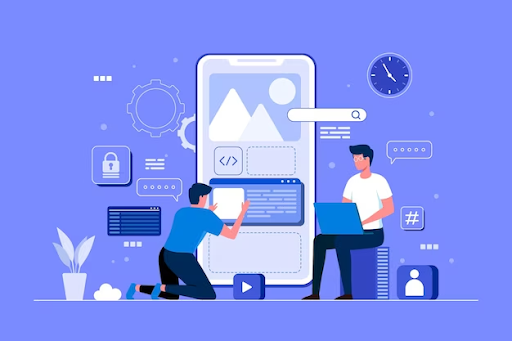
In the ever-evolving landscape of mobile app development, Flutter has emerged as a game-changer, revolutionizing the way developers create applications that run seamlessly across multiple platforms. This comprehensive guide aims to provide you with an in-depth understanding of the key aspects to consider before embarking on your Flutter app development journey.
Understanding Flutter: A Brief Overview
At its core, Flutter is a powerful open-source UI software development kit developed by Google. It enables developers to build natively compiled applications for mobile, web, and desktop from a single codebase. One of its most notable features is the ability to facilitate mobile app development, which has become a vital consideration in the modern development landscape.
The Versatility of Cross-Platform App Development
Cross-platform app development has gained prominence due to its ability to create applications that function seamlessly on both iOS and Android devices. This approach eliminates the need for separate development processes for different platforms, leading to significant time and resource savings.
Flutter takes this concept a step further by offering a unified development experience. It provides a set of widgets that are adaptable to various screen sizes and orientations, resulting in a consistent user experience across platforms. This not only simplifies the development process but also ensures that users receive a cohesive interface, irrespective of the device they are using.
Benefits of Flutter App Development
Before you dive into the technical details of Flutter app development, it’s important to grasp the numerous benefits that this framework brings to the table:
1. Rapid Development with “Hot Reload”
Flutter’s “hot reload” feature is a developer’s dream. It allows you to instantly see the effects of changes made to your code, without the need to restart the app. This accelerates the development cycle, as developers can quickly iterate and fine-tune their applications.
2. Consistent UI with Customizable Widgets
Flutter boasts a wide range of customizable widgets that can be used to construct complex user interfaces. From basic buttons and text fields to intricate animations, Flutter widgets offer the flexibility to create unique and visually appealing designs that align with your app’s branding.
3. Single Codebase, Multiple Platforms
Gone are the days of maintaining separate codebases for iOS and Android. With Flutter, you can write a single codebase that runs on both platforms. This not only streamlines development but also ensures that updates and bug fixes are applied uniformly.
4. Native Performance
Flutter’s performance is on par with native applications. It achieves this by compiling down to native ARM code, resulting in speedy execution and smooth animations. This addresses a common concern in cross-platform development where performance might be compromised.
5. Open Source Community and Resources
Being open source, Flutter has a vibrant and engaged community of developers who contribute to its growth. This means you have access to a plethora of resources, tutorials, and libraries that can expedite your learning curve and development process.
Preparing for Flutter App Development
1. Familiarize Yourself with Dart:
Before you embark on your Flutter journey, take the time to familiarize yourself with Dart – the programming language used for developing Flutter apps. Dart is known for its clean syntax, strong typing, and support for asynchronous programming, all of which are essential for efficient app development.
2. Install Flutter:
Getting started with Flutter is a straightforward process. Head over to the official Flutter website and follow the installation instructions provided for your specific operating system. This will set up the Flutter software development kit on your machine, allowing you to start coding right away.
3. Choose Your IDE:
The choice of your Integrated Development Environment (IDE) can significantly impact your development experience. While Flutter supports multiple IDEs, two popular choices are Android Studio and Visual Studio Code. These IDEs offer Flutter plugins that enhance code completion, debugging, and project management.
4. Master the Widget Hierarchy:
In Flutter, everything is a widget. Widgets are the building blocks of your app’s user interface. Understanding the widget hierarchy and how different widgets interact is crucial for creating complex and interactive UIs. Flutter provides a diverse range of widgets, from basic to highly specialized ones.
Key Considerations for Flutter App Development
1. Meticulous UI/UX Design:
A well-thought-out user interface is paramount for the success of any app. Plan your UI meticulously, keeping user experience at the forefront. Consider user flows, navigation, and visual aesthetics to create an intuitive and engaging interface.
2. Responsive Layouts for All Devices:
Today’s users expect applications to work seamlessly on a variety of devices, from smartphones to tablets and beyond. Flutter’s responsive layout capabilities allow you to design interfaces that adapt gracefully to different screen sizes and orientations, ensuring a consistent experience for all users.
3. Effective State Management:
Managing the state of your app is a critical aspect of Flutter development. Poor state management can lead to performance issues and buggy behavior. Explore various state management solutions such as Provider, Bloc, Redux, and MobX. Choose the one that aligns with your app’s complexity and your development preferences.
4. Seamless API Integration:
Most modern apps rely on data fetched from servers through APIs. Flutter provides robust packages like Dio and HTTP that simplify API integration. Design your app’s architecture in a way that decouples API calls from UI components, enhancing maintainability and testability.
5. Invest in Testing:
Robust testing is indispensable for delivering a stable and reliable app. Flutter provides tools for unit testing, widget testing, and integration testing. Writing tests from the outset of development ensures that changes or updates to your codebase don’t inadvertently introduce bugs.
Best Practices for Cross-Platform App Development
1. Platform-Specific Code Handling:
While Flutter promotes code reusability, there might be instances where platform-specific features are required. Flutter’s platform channels allow you to interact with native code written in languages like Java (Android) and Swift (iOS), seamlessly integrating platform-specific functionality.
2. Optimize for Performance:
Maintaining optimal performance is essential for user satisfaction. Minimize unnecessary widget rebuilding, utilize asynchronous programming to keep the UI responsive, and offload computationally intensive tasks to isolate threads. Remember, a snappy app experience contributes to user retention.
3. Localization and Internationalization:
In a global market, catering to users from different linguistic and cultural backgrounds is crucial. Flutter simplifies the process of localizing and internationalizing your app. Design your app with localization in mind, ensuring that it’s ready to be translated into various languages.
4. Continuous Updates and Maintenance:
The tech landscape is ever-evolving, and Flutter is no exception. Stay updated with the latest Flutter releases, as they often bring new features, bug fixes, and performance enhancements. Regularly update your app to ensure compatibility with new versions of operating systems and devices.
Conclusion
With this comprehensive guide, you’re well-equipped to venture into the world of Flutter app development Company. From understanding the core concepts to mastering widgets, state management, and best practices, you’re now armed with the knowledge to create remarkable cross-platform applications. Embrace the journey, keep learning, and leverage the power of Flutter to build apps that captivate users and contribute to the ever-expanding mobile app ecosystem.

